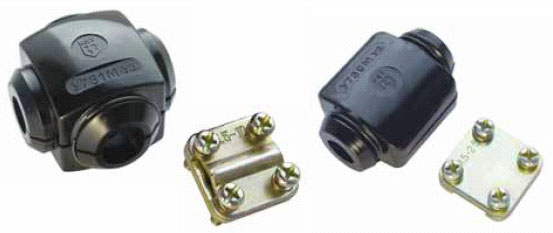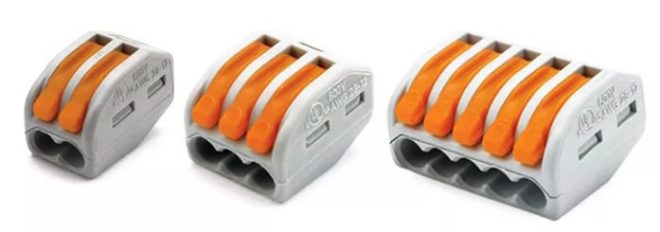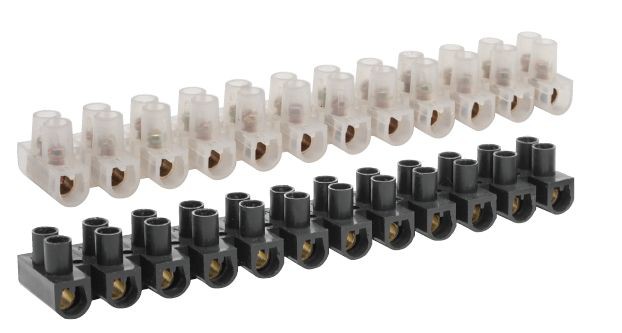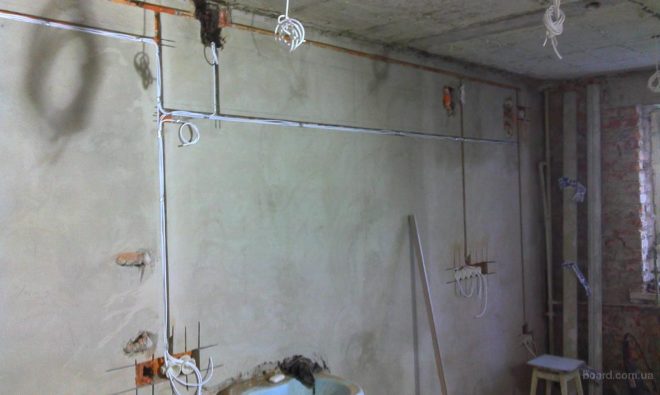Copper vs. Aluminum - Which Wiring Is Better?

Which is better - copper or aluminum wiring? This question is often raised among specialists and ordinary people who plan to change old wires in a house, apartment or office. But in order to make the right decision, it is important to know the advantages and disadvantages, operating rules, as well as the main differences between copper and aluminum switching.
Content
Pros and cons

Aluminum wiring has the following advantages:
- Light weight. This feature is important when installing power lines, the length of which can reach tens, or even hundreds of kilometers.
- Affordability. When choosing a material for wiring, many are guided by the cost of the metal. Aluminum is lower, respectively, which explains the lower price of products from this metal.
- Resistance to oxidative processes (relevant in the absence of contact with open air).
- The presence of a protective film. During operation, a thin coating forms on the aluminum wiring, which protects the metal from oxidative processes.

Aluminum also has a number of disadvantages that you need to be aware of:
- High resistivity of the metal and tendency to heat. For this reason, the use of a wire less than 16 sq. Mm is not allowed (taking into account the requirements of the PUE, 7th edition).
- Looseness of contact joints due to frequent heating during heavy load and subsequent cooling.
- The film that appears on the aluminum wire when it comes into contact with air has poor current conductivity, which creates additional problems at the joints of cable products
- Fragility. Aluminum wires break easily, which is especially important with frequent overheating of the metal. In practice, the resource of aluminum wiring does not exceed 30 years, after which it must be changed.
Rules for the connection of copper and aluminum
There are situations when you need to replace only part of the wiring or add (move) several outlets in the apartment. In such a situation, the question arises, how to properly connect wires made of different metals... To avoid increased heating in the places where copper and aluminum wiring are combined, it is worth using the following switching methods:
- The connection is of the "nut" type. In this version, the wires are clamped between special plates (there are three in total). First, the plates are unscrewed from the top and bottom, after which a wire is inserted between the middle and upper clamp. At the last stage, the product is tightened. The same manipulation is done on the other side.

- Bolt connection. Such a fastening looks like a "nut" with the only difference that two wires are combined and put on one bolt with a washer installed between them. Further, fixing is done with a nut.

- Spring terminals. If the wiring is changed completely, it is better to use WAGO type terminal blocks. Their peculiarity lies in the ease of installation and convenience of fastening the wires, thanks to the spring type of clamps. Before using such terminals, it is important to pre-strip the cable at a distance of 13-15 mm along the edges. After that, the wire is inserted into the hole and secured with small levers. A special lubricant is provided in the middle of the terminals to prevent oxidation of metals.
 The use of spring terminals is only permissible in the lighting network. The flow of a large load leads to heating of the springs of the terminal block, deterioration of the contact quality and, accordingly, a decrease in conductivity.
The use of spring terminals is only permissible in the lighting network. The flow of a large load leads to heating of the springs of the terminal block, deterioration of the contact quality and, accordingly, a decrease in conductivity. - Terminal blocks are one of the best options for bundling copper or aluminum wires. The product is a strip made of dielectric material with a metal strip and clamping terminals.During installation, you need to strip the edges of the cable, insert it into the holes and squeeze well.

The considered connection methods can be used to combine wires made of various metals (not only copper and aluminum). This design guarantees a high level of safety and the possibility of avoiding potentially dangerous twisting. But it is worth remembering the importance of periodically checking and pulling bolted connections and terminal blocks, because they tend to weaken.
What is the best wiring material?

Now let's figure out in more detail which wire is better than copper or aluminum. In this regard, many stereotypes and misconceptions have appeared, which we will talk about below:
- Durability. It is believed that the lifespan of copper wire is longer than that of aluminum. This is a misconception. If you look in a special reference book, you can make sure that the resource of cables from both types of metal is identical. For products with single insulation, it is 15 years, and with double insulation, it is 30.
- Oxidation tendency. When using an aluminum cable, it is worth remembering its tendency to oxidative processes. Back in school, we were told that Al (aluminum) is a metal that actively interacts with oxygen, which is why a thin film appears on its surface. The latter protects the metal from further decay, but impairs its conductivity. By isolating the wire from the environment, the risk of oxidative processes is minimized. The best option is to use special terminal blocks with conductive paste. The peculiarity of the latter is to improve the quality of the contact connection between the two wires and to remove the oxide film from the metal. In addition, a special lubricant prevents aluminum from contacting the ambient air.
- Strength. Copper wiring is considered to be more durable and capable of withstanding multiple bends. The GOST states that a wire made of copper must withstand 80 bends, and made of aluminum - 12. If the wiring runs in a wall, floor, or hidden under the ceiling, this feature is not so important.
- Cost. The price of an aluminum wire is 3-4 times lower. But when choosing, it is important to remember that a copper wire with a cross section of 2.5 sq. Mm is designed for a current of 27 Amperes. If aluminum wiring is preferred, the wire should be 4 square meters thick. mm (rated current 28 Amperes).
- Resistance. When deciding what to choose - aluminum or copper wires, it is worth considering the different resistivity. For copper, this parameter is about 0.018 Ohm * sq.mm / m, and for aluminum - 0.028. But it is worth considering that the total resistance (R) of the conductor depends not only on the mentioned parameter, but also on the length and area of the conductor. If we take into account that aluminum wires of a larger cross-section are used for the same load, the total R of copper and aluminum products will be approximately identical. The greatest resistance occurs at the junctions, but when you follow the tips discussed above, you can not be afraid of this.
- Ease of installation. It is believed that connecting aluminum wires is a more difficult task. This is only relevant for the usual wiring combining, by twisting. In the case of using end fittings, terminal blocks or bolts, this problem disappears.

Special attention should be paid to the situation implying contact of two different metals... When copper and aluminum combine at the point of contact, various processes occur, due to the flow of which resistance increases. As a result, the junction of the two wires overheats, the insulation collapses and the risk of fire increases.
The feature considered above is typical for all metals with different resistivity. In addition, many manufacturers use not “pure” metals, but their alloys, which also leads to a change in the resistance parameter. To avoid problems in the future, it is best to connect the wires correctly and avoid twisting them.
Helpful hints

In conclusion, here are some tips that should be taken into account when organizing the wiring:
- In the case of self-designing wiring in a house or apartment, it is better to choose copper wires. With a smaller cross-section, they can withstand higher currents and are more resistant to frequent bending. An equally important point is volume. Copper wires are compact, making it easy to create a groove. For example, when connecting a 7-8 kW receiver, the aluminum wire should have a cross section of about 8 mm. The cable has three cores plus a braid. As a result, the total diameter is about 1.5 centimeters. For comparison, copper can have a cross section of 4 sq. Mm, and the total diameter is no more than a centimeter.
- When installing the socket, a three-wire cable with a ground wire must be used. The distance of the socket from the floor is 30 cm. When organizing the lighting circuit, cables with two conductors can be used (grounding is not needed here).
- It is forbidden to hang the entire load on one pair of wires (especially if they are aluminum). The best option is to split the circuit into several lines. For example, a bathroom is fed through one machine, lighting through another, a kitchen through a third, and so on. The cross-section of the wire for the kitchen and bathroom should be 4 or 6 sq. Mm, and for the lighting circuit - 1.5 or 2.5 mm.
The situation is most difficult in old apartments, where aluminum wires are mounted, which have outlived their resource and require replacement. Wiring with a cross section of 2.5 sq. Mm can withstand a load of no more than 20 Amperes, which is not enough for modern electrical receivers. In addition, wire insulation loses its elasticity over time and gradually deteriorates. In such a situation, the only solution is to completely replace the wiring with copper wires.
For more information on why it is worth replacing aluminum wiring with copper in an old house, see this video:
Outcome
Which wire is better? From the point of view of performance, copper is more preferable. In terms of cost, aluminum wires are cheaper. And here it is important to make a decision - to save on your safety or not.




